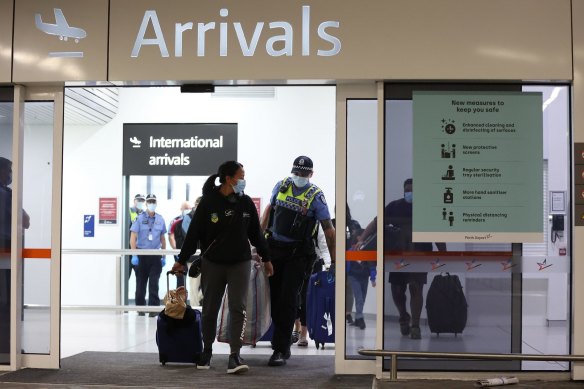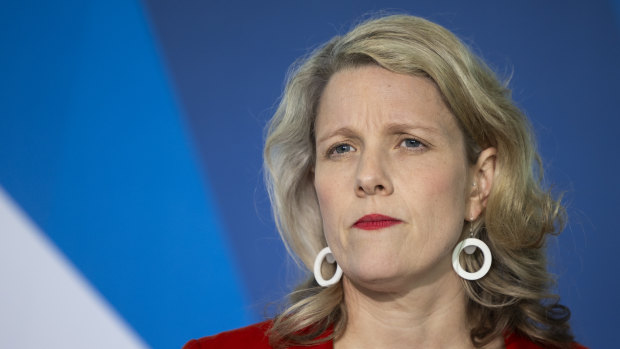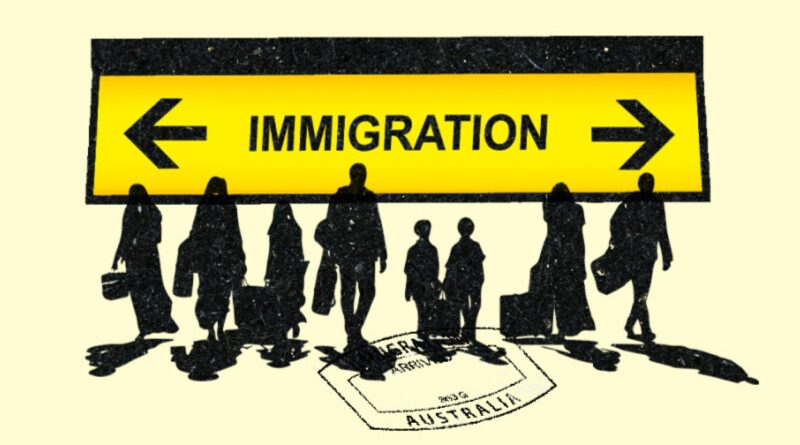Migrant numbers growing as government’s student crackdown begins
The federal government is bracing for more questions over its control of the nation’s population growth with new figures expected to show another 150,000 migrants entering the country, putting at risk budget forecasts for total migration numbers.
As Home Affairs Minister Clare O’Neil signalled the government would start issuing warning notices to high-risk education providers that have become “visa factories”, data from the Australian Bureau of Statistics on Thursday is expected to show an increase in total net migration in the three months to the end of September.

New figures are expected to show an increase in net overseas migration, taking population growth to its highest level in more than 40 years.Credit: Getty
The government had forecast in the current budget that total net overseas migration through the 2023-24 financial year would edge down to 315,000. This was upgrade to 375,000 in the mid-year budget update, but a 150,000 increase in the September quarter would make it exceptionally difficult to stay within the full-year forecast.
Population growth, already at a 40-year-high rate of 2.4 per cent, is expected to push higher with the total population reaching almost 26.8 million.
The new numbers pre-date many of the actions taken by the government to bring down total population growth, which reached a record 624,100 through 2022-23 – or more than 1700 a day. Eighty per cent of new residents, which included an increase of 106,100 in natural population (births minus deaths), were absorbed by Victoria, NSW, ACT and Queensland.
The Coalition has accused the government of running a “big Australia by stealth” policy, while the economy would have contracted by more than a percentage point over the past year without population growth.
Loading
Since September, the government has closed the pandemic-event visa with 10,000 of these visa holders having already left the country. Another 36,000 of these visas are due to expire in the next three months.
More recent data has shown a sharp drop in international student visas which have accounted for much of the surge in population growth over the past two years. Student visa applications and approvals had, by February, fallen by more than a third over the past 12 months.
The record net overseas migration intake was set in the March quarter of last year when a net 157,700 people entered the country. The March and September quarters are traditionally the largest intake periods due to student arrivals.
The government is expecting student numbers to drop further as key elements of its new migration strategy start on Saturday. This includes new powers that will enable it to suspend education providers that target international students.

Home Affairs Minister Clare O’Neil expects actions aimed at high-risk education providers will reduce international student numbers.Credit: Alex Ellinghausen
The highest-risk providers are expected to be issued warning notices within weeks, giving them six months to improve their operations or be shut down.
Other changes that start this Saturday include a “genuine student” test aimed at people believed to come into Australia to work rather than study, and the introduction of “no further stay” conditions on visitor visas.
O’Neil said the government was focused on bringing rigour to the student visa sector.
“Since September, the government’s actions have led to substantial declines in migration levels, with recent international student visa grants down by 35 per cent on the previous year,” she said.
Loading
“The actions this weekend will continue to drive migration levels down while delivering on our commitments in the migration strategy to fix the broken system we inherited.”
The government is also pushing through legislation that would make it easier to shut down non-genuine vocational education and training providers, some of whom are also targeting international students.
Skills and Training Minister Brendan O’Connor said the proposed laws, currently before the Senate, would form part of a wider effort to control the sector.
“There is no place for dodgy providers in the sector who take advantage of international students and undermine the sector and the majority of providers who do the right thing,” he said.
“Increased powers for the regulator and tougher penalties will deter dodgy providers who currently see fines as a risk worth taking or merely a ‘cost of doing business’.”
Cut through the noise of federal politics with news, views and expert analysis. Subscribers can sign up to our weekly Inside Politics newsletter.
Most Viewed in Politics
Loading

